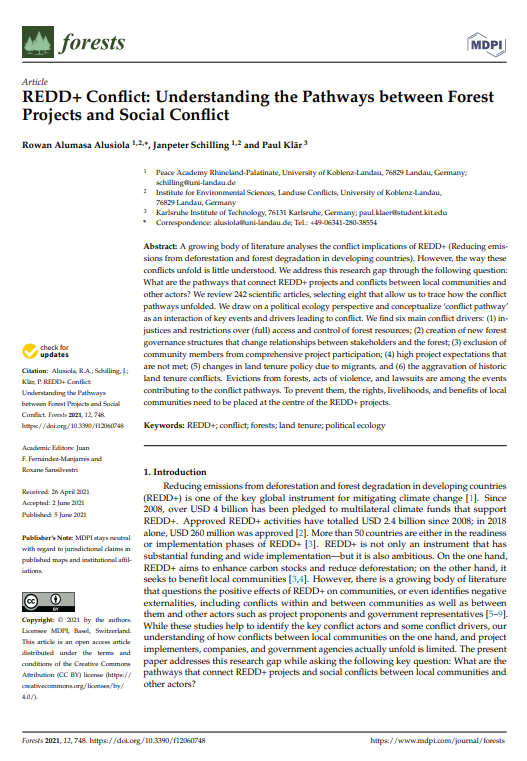Resource information
: A growing body of literature analyses the conflict implications of REDD+ (Reducing emissions from deforestation and forest degradation in developing countries). However, the way these conflicts unfold is little understood. We address this research gap through the following question: What are the pathways that connect REDD+ projects and conflicts between local communities and other actors? We review 242 scientific articles, selecting eight that allow us to trace how the conflict pathways unfolded. We draw on a political ecology perspective and conceptualize ‘conflict pathway’ as an interaction of key events and drivers leading to conflict. We find six main conflict drivers: (1) injustices and restrictions over (full) access and control of forest resources; (2) creation of new forest governance structures that change relationships between stakeholders and the forest; (3) exclusion of community members from comprehensive project participation; (4) high project expectations that are not met; (5) changes in land tenure policy due to migrants, and (6) the aggravation of historic land tenure conflicts. Evictions from forests, acts of violence, and lawsuits are among the events contributing to the conflict pathways. To prevent them, the rights, livelihoods, and benefits of local communities need to be placed at the centre of the REDD+ projects.

